Search for Indicators
All Data
Indicator Gauge Icon Legend
Legend Colors
Red is bad, green is good, blue is not statistically different/neutral.
Compared to Distribution
 the value is in the best half of communities.
the value is in the best half of communities.
 the value is in the 2nd worst quarter of communities.
the value is in the 2nd worst quarter of communities.
 the value is in the worst quarter of communities.
the value is in the worst quarter of communities.
Compared to Target
 meets target;
meets target;  does not meet target.
does not meet target.
Compared to a Single Value
 lower than the comparison value;
lower than the comparison value;
 higher than the comparison value;
higher than the comparison value;
 not statistically different from comparison value.
not statistically different from comparison value.
Trend

 non-significant change over time;
non-significant change over time; 
 significant change over time;
significant change over time;  no change over time.
no change over time.
Compared to Prior Value
 higher than the previous measurement period;
higher than the previous measurement period;
 lower than the previous measurement period;
lower than the previous measurement period;
 no statistically different change from previous measurement period.
no statistically different change from previous measurement period.
City: District of Columbia
Health / Oral Health
Value
Compared to:
City: District of Columbia Children Receiving Any Dental Care
City: District of Columbia Children Receiving Any Dental Care
82.3%
(2011-2012)
Compared to:


US Value
(77.5%)
The regional value is compared to the national value.
City: District of Columbia Children Receiving Preventive Dental Care
City: District of Columbia Children Receiving Preventive Dental Care
82.3%
(2011-2012)
Compared to:



US Value
(77.2%)
The regional value is compared to the national value.

Prior Value
(81.7%)
Prior Value compares a measured value with the previously measured value. Confidence intervals were taken into account in determining the direction of the comparison.
City: District of Columbia Children with Oral Health Problems
City: District of Columbia Children with Oral Health Problems
18.6%
(2011-2012)
Compared to:


US Value
(18.7%)
The regional value is compared to the national value.
City: District of Columbia Condition of Children's Teeth
City: District of Columbia Condition of Children's Teeth
94.9%
(2011-2012)
Compared to:



US Value
(92.4%)
The regional value is compared to the national value.

Prior Value
(91.2%)
Prior Value compares a measured value with the previously measured value. Confidence intervals were not taken into account in determining the direction of the comparison.
City: District of Columbia Dentist Rate
City: District of Columbia Dentist Rate
129
Dentists per 100,000 population
(2022)
Compared to:
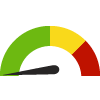




U.S. Counties
The distribution is based on data from 3,054 U.S. counties and county equivalents.

U.S. States
The distribution is based on data from 50 U.S. states and the District of Columbia.

Prior Value
(129)
Prior Value compares a measured value with the previously measured value. Confidence intervals were not taken into account in determining the direction of the comparison.

Trend
This comparison measures the indicator’s values over multiple time periods.<br>The Mann-Kendall Test for Statistical Significance is used to evaluate the trend<br>over 4 to 10 periods of measure, subject to data availability and comparability.
City: District of Columbia
Health / Other Conditions
Value
Compared to:
City: District of Columbia Adults with Arthritis
City: District of Columbia Adults with Arthritis
18.4%
(2021)
Compared to:



U.S. Counties
The distribution is based on data from 3,074 U.S. counties and county equivalents.

US Value
(25.2%)
The regional value is compared to the national value.
City: District of Columbia Adults with Kidney Disease
City: District of Columbia Adults with Kidney Disease
2.6%
(2021)
Compared to:



U.S. Counties
The distribution is based on data from 3,074 U.S. counties and county equivalents.

US Value
(3.1%)
The regional value is compared to the national value.
City: District of Columbia Age-Adjusted Death Rate due to Kidney Disease
City: District of Columbia Age-Adjusted Death Rate due to Kidney Disease
7.0
Deaths per 100,000 population
(2018-2020)
Compared to:

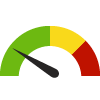




U.S. Counties
The distribution is based on data from 1,416 U.S. counties and county equivalents.

U.S. States
The distribution is based on data from 50 U.S. states and the District of Columbia.

US Value
(12.8)
The regional value is compared to the national value.

Prior Value
(8.0)
Prior Value compares a measured value with the previously measured value. Confidence intervals were taken into account in determining the direction of the comparison.

Trend
This comparison measures the indicator’s values over multiple time periods.<br>The Mann-Kendall Test for Statistical Significance is used to evaluate the trend<br>over 4 to 10 periods of measure, subject to data availability and comparability.
City: District of Columbia Chronic Kidney Disease: Medicare Population
City: District of Columbia Chronic Kidney Disease: Medicare Population
14.0%
(2022)
Compared to:






U.S. Counties
The distribution is based on data from 3,129 U.S. counties and county equivalents.

U.S. States
The distribution is based on data from 50 U.S. states and the District of Columbia.

US Value
(18.0%)
The regional value is compared to the national value.

Prior Value
(13.0%)
Prior Value compares a measured value with the previously measured value. Confidence intervals were not taken into account in determining the direction of the comparison.

Trend
This comparison measures the indicator’s values over multiple time periods.<br>The Mann-Kendall Test for Statistical Significance is used to evaluate the trend<br>over 4 to 10 periods of measure, subject to data availability and comparability.
City: District of Columbia Osteoporosis: Medicare Population
City: District of Columbia Osteoporosis: Medicare Population
11.0%
(2022)
Compared to:
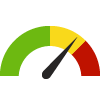





U.S. Counties
The distribution is based on data from 3,129 U.S. counties and county equivalents.

U.S. States
The distribution is based on data from 50 U.S. states and the District of Columbia.

US Value
(11.0%)
The regional value is compared to the national value.

Prior Value
(10.0%)
Prior Value compares a measured value with the previously measured value. Confidence intervals were not taken into account in determining the direction of the comparison.

Trend
This comparison measures the indicator’s values over multiple time periods.<br>The Mann-Kendall Test for Statistical Significance is used to evaluate the trend<br>over 4 to 10 periods of measure, subject to data availability and comparability.
City: District of Columbia Rheumatoid Arthritis or Osteoarthritis: Medicare Population
City: District of Columbia Rheumatoid Arthritis or Osteoarthritis: Medicare Population
31.0%
(2022)
Compared to:






U.S. Counties
The distribution is based on data from 3,129 U.S. counties and county equivalents.

U.S. States
The distribution is based on data from 50 U.S. states and the District of Columbia.

US Value
(35.0%)
The regional value is compared to the national value.

Prior Value
(29.0%)
Prior Value compares a measured value with the previously measured value. Confidence intervals were not taken into account in determining the direction of the comparison.

Trend
This comparison measures the indicator’s values over multiple time periods.<br>The Mann-Kendall Test for Statistical Significance is used to evaluate the trend<br>over 4 to 10 periods of measure, subject to data availability and comparability.
City: District of Columbia
Health / Physical Activity
Value
Compared to:
City: District of Columbia Adults 20+ who are Sedentary
City: District of Columbia Adults 20+ who are Sedentary
15.2%
(2021)
Compared to:




U.S. Counties
The distribution is based on data from 3,074 U.S. counties and county equivalents.

Prior Value
(15.9%)
Prior Value compares a measured value with the previously measured value. Confidence intervals were taken into account in determining the direction of the comparison.

Trend
This comparison measures the indicator’s values over multiple time periods.<br>The Mann-Kendall Test for Statistical Significance is used to evaluate the trend<br>over 4 to 10 periods of measure, subject to data availability and comparability.
City: District of Columbia Adults who are Sedentary
City: District of Columbia Adults who are Sedentary
18.2%
(2018)
Compared to:



US Value
(24.2%)
The regional value is compared to the national value.

HP 2030 Target
(21.8%)
City: District of Columbia Adults who Engage in Regular Physical Activity
City: District of Columbia Adults who Engage in Regular Physical Activity
75.7%
(2017)
Compared to:




US Value
(73.8% in 2011)
The regional value is compared to the national value.

Prior Value
(83.8%)
Prior Value compares a measured value with the previously measured value. Confidence intervals were not taken into account in determining the direction of the comparison.

Trend
This comparison measures the indicator’s values over multiple time periods.<br>The Mann-Kendall Test for Statistical Significance is used to evaluate the trend<br>over 4 to 10 periods of measure, subject to data availability and comparability.
City: District of Columbia Teens who Engage in Regular Physical Activity: High School Students
City: District of Columbia Teens who Engage in Regular Physical Activity: High School Students
32.2%
(2021)
Compared to:





U.S. States
The distribution is based on data from 44 U.S. states and the District of Columbia.

US Value
(45.3%)
The regional value is compared to the national value.

Prior Value
(27.9%)
Prior Value compares a measured value with the previously measured value. Confidence intervals were taken into account in determining the direction of the comparison.

Trend
This comparison measures the indicator’s values over multiple time periods.<br>The Mann-Kendall Test for Statistical Significance is used to evaluate the trend<br>over 4 to 10 periods of measure, subject to data availability and comparability.
City: District of Columbia Teens who Play Team Sports
City: District of Columbia Teens who Play Team Sports
54.5%
(2013)
Compared to:



US Value
(54.0%)
The regional value is compared to the national value.

Prior Value
(53.0%)
Prior Value compares a measured value with the previously measured value. Confidence intervals were taken into account in determining the direction of the comparison.
City: District of Columbia Teens who Skip PE Classes
City: District of Columbia Teens who Skip PE Classes
65.8%
(2011)
Compared to:


US Value
(48.2%)
The regional value is compared to the national value.
City: District of Columbia
Health / Prevention & Safety
Value
Compared to:
City: District of Columbia Age-Adjusted Death Rate due to Firearms
City: District of Columbia Age-Adjusted Death Rate due to Firearms
18.9
Deaths per 100,000 population
(2018-2020)
Compared to:

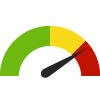





U.S. Counties
The distribution is based on data from 1,083 U.S. counties and county equivalents.

U.S. States
The distribution is based on data from 50 U.S. states and the District of Columbia.

US Value
(12.0)
The regional value is compared to the national value.

Prior Value
(15.8)
Prior Value compares a measured value with the previously measured value. Confidence intervals were taken into account in determining the direction of the comparison.

Trend
This comparison measures the indicator’s values over multiple time periods.<br>The Mann-Kendall Test for Statistical Significance is used to evaluate the trend<br>over 4 to 10 periods of measure, subject to data availability and comparability.

HP 2030 Target
(10.7)
City: District of Columbia Age-Adjusted Death Rate due to Unintentional Injuries
City: District of Columbia Age-Adjusted Death Rate due to Unintentional Injuries
64.6
Deaths per 100,000 population
(2018-2020)
Compared to:







U.S. Counties
The distribution is based on data from 2,454 U.S. counties and county equivalents.

U.S. States
The distribution is based on data from 50 U.S. states and the District of Columbia.

US Value
(51.6)
The regional value is compared to the national value.

Prior Value
(59.3)
Prior Value compares a measured value with the previously measured value. Confidence intervals were taken into account in determining the direction of the comparison.

Trend
This comparison measures the indicator’s values over multiple time periods.<br>The Mann-Kendall Test for Statistical Significance is used to evaluate the trend<br>over 4 to 10 periods of measure, subject to data availability and comparability.

HP 2030 Target
(43.2)
City: District of Columbia Teens Forced to have Sex
City: District of Columbia Teens Forced to have Sex
9.2%
(2013)
Compared to:



US Value
(7.3%)
The regional value is compared to the national value.

Prior Value
(9.7%)
Prior Value compares a measured value with the previously measured value. Confidence intervals were taken into account in determining the direction of the comparison.
City: District of Columbia Teens Injured with a Weapon at School
City: District of Columbia Teens Injured with a Weapon at School
8.5%
(2013)
Compared to:



US Value
(6.9%)
The regional value is compared to the national value.

Prior Value
(8.7%)
Prior Value compares a measured value with the previously measured value. Confidence intervals were taken into account in determining the direction of the comparison.
City: District of Columbia Teens who Carried a Weapon
City: District of Columbia Teens who Carried a Weapon
20.0%
(2013)
Compared to:



US Value
(17.9%)
The regional value is compared to the national value.

Prior Value
(18.9%)
Prior Value compares a measured value with the previously measured value. Confidence intervals were taken into account in determining the direction of the comparison.
City: District of Columbia Teens who Experienced Physical Violence by Partner
City: District of Columbia Teens who Experienced Physical Violence by Partner
12.0%
(2013)
Compared to:



US Value
(10.3%)
The regional value is compared to the national value.

Prior Value
(14.7%)
Prior Value compares a measured value with the previously measured value. Confidence intervals were taken into account in determining the direction of the comparison.
City: District of Columbia Teens who Experienced Sexual Violence by Partner
City: District of Columbia Teens who Experienced Sexual Violence by Partner
9.3%
(2013)
Compared to:


US Value
(10.4%)
The regional value is compared to the national value.
City: District of Columbia Teens who Felt Unsafe to Attend School
City: District of Columbia Teens who Felt Unsafe to Attend School
9.0%
(2013)
Compared to:



US Value
(7.1%)
The regional value is compared to the national value.

Prior Value
(7.7%)
Prior Value compares a measured value with the previously measured value. Confidence intervals were taken into account in determining the direction of the comparison.
City: District of Columbia Teens who Physically Fought
City: District of Columbia Teens who Physically Fought
37.6%
(2013)
Compared to:



US Value
(24.7%)
The regional value is compared to the national value.

Prior Value
(37.9%)
Prior Value compares a measured value with the previously measured value. Confidence intervals were taken into account in determining the direction of the comparison.
City: District of Columbia Teens who Physically Fought at School
City: District of Columbia Teens who Physically Fought at School
15.3%
(2013)
Compared to:



US Value
(8.1%)
The regional value is compared to the national value.

Prior Value
(15.8%)
Prior Value compares a measured value with the previously measured value. Confidence intervals were taken into account in determining the direction of the comparison.
City: District of Columbia
Health / Respiratory Diseases
Value
Compared to:
City: District of Columbia Adults with COPD
City: District of Columbia Adults with COPD
4.2%
Percent of adults
(2021)
Compared to:



U.S. Counties
The distribution is based on data from 3,074 U.S. counties and county equivalents.

US Value
(6.4%)
The regional value is compared to the national value.
City: District of Columbia Adults with Current Asthma
City: District of Columbia Adults with Current Asthma
9.4%
(2017)
Compared to:



Prior Value
(10.6%)
Prior Value compares a measured value with the previously measured value. Confidence intervals were not taken into account in determining the direction of the comparison.

Trend
This comparison measures the indicator’s values over multiple time periods.<br>The Mann-Kendall Test for Statistical Significance is used to evaluate the trend<br>over 4 to 10 periods of measure, subject to data availability and comparability.
City: District of Columbia Asthma: Medicare Population
City: District of Columbia Asthma: Medicare Population
6.0%
(2022)
Compared to:






U.S. Counties
The distribution is based on data from 3,129 U.S. counties and county equivalents.

U.S. States
The distribution is based on data from 50 U.S. states and the District of Columbia.

US Value
(7.0%)
The regional value is compared to the national value.

Prior Value
(6.0%)
Prior Value compares a measured value with the previously measured value. Confidence intervals were not taken into account in determining the direction of the comparison.

Trend
This comparison measures the indicator’s values over multiple time periods.<br>The Mann-Kendall Test for Statistical Significance is used to evaluate the trend<br>over 4 to 10 periods of measure, subject to data availability and comparability.
City: District of Columbia COPD: Medicare Population
City: District of Columbia COPD: Medicare Population
6.0%
(2022)
Compared to:






U.S. Counties
The distribution is based on data from 3,129 U.S. counties and county equivalents.

U.S. States
The distribution is based on data from 50 U.S. states and the District of Columbia.

US Value
(11.0%)
The regional value is compared to the national value.

Prior Value
(6.0%)
Prior Value compares a measured value with the previously measured value. Confidence intervals were not taken into account in determining the direction of the comparison.

Trend
This comparison measures the indicator’s values over multiple time periods.<br>The Mann-Kendall Test for Statistical Significance is used to evaluate the trend<br>over 4 to 10 periods of measure, subject to data availability and comparability.
City: District of Columbia Teens with Asthma
City: District of Columbia Teens with Asthma
31.0%
(2013)
Compared to:



US Value
(21.0%)
The regional value is compared to the national value.

Prior Value
(29.5%)
Prior Value compares a measured value with the previously measured value. Confidence intervals were taken into account in determining the direction of the comparison.
City: District of Columbia
Health / Sexually Transmitted Infections
Value
Compared to:
City: District of Columbia Chlamydia Cases among Youth
City: District of Columbia Chlamydia Cases among Youth
2,906
Cases
(2021)
Compared to:



Prior Value
(2,865)
Prior Value compares a measured value with the previously measured value. Confidence intervals were not taken into account in determining the direction of the comparison.

Trend
This comparison measures the indicator’s values over multiple time periods.<br>The Mann-Kendall Test for Statistical Significance is used to evaluate the trend<br>over 4 to 10 periods of measure, subject to data availability and comparability.
City: District of Columbia Chlamydia Incidence Rate
City: District of Columbia Chlamydia Incidence Rate
1,032.8
Cases per 100,000 population
(2021)
Compared to:




US Value
(495.5)
The regional value is compared to the national value. The source for the national value is National Center for HIV/AIDS, Viral Hepatitis, STD, and TB Prevention

Prior Value
(843.9)
Prior Value compares a measured value with the previously measured value. Confidence intervals were not taken into account in determining the direction of the comparison.

Trend
This comparison measures the indicator’s values over multiple time periods.<br>The Mann-Kendall Test for Statistical Significance is used to evaluate the trend<br>over 4 to 10 periods of measure, subject to data availability and comparability.
City: District of Columbia Gonorrhea Cases among Youth
City: District of Columbia Gonorrhea Cases among Youth
1,162
Cases
(2021)
Compared to:



Prior Value
(1,153)
Prior Value compares a measured value with the previously measured value. Confidence intervals were not taken into account in determining the direction of the comparison.

Trend
This comparison measures the indicator’s values over multiple time periods.<br>The Mann-Kendall Test for Statistical Significance is used to evaluate the trend<br>over 4 to 10 periods of measure, subject to data availability and comparability.
City: District of Columbia Gonorrhea Incidence Rate
City: District of Columbia Gonorrhea Incidence Rate
642.3
Cases per 100,000 population
(2021)
Compared to:




US Value
(206.5 in 2020)
The regional value is compared to the national value. The source for the national value is National Center for HIV/AIDS, Viral Hepatitis, STD, and TB Prevention

Prior Value
(509.1)
Prior Value compares a measured value with the previously measured value. Confidence intervals were not taken into account in determining the direction of the comparison.

Trend
This comparison measures the indicator’s values over multiple time periods.<br>The Mann-Kendall Test for Statistical Significance is used to evaluate the trend<br>over 4 to 10 periods of measure, subject to data availability and comparability.
City: District of Columbia HIV Cases among Youth
City: District of Columbia HIV Cases among Youth
9
Cases
(2021)
Compared to:



Prior Value
(10)
Prior Value compares a measured value with the previously measured value. Confidence intervals were not taken into account in determining the direction of the comparison.

Trend
This comparison measures the indicator’s values over multiple time periods.<br>The Mann-Kendall Test for Statistical Significance is used to evaluate the trend<br>over 4 to 10 periods of measure, subject to data availability and comparability.
City: District of Columbia HIV/AIDS Prevalence Rate
City: District of Columbia HIV/AIDS Prevalence Rate
1,776.6
Cases per 100,000 population
(2021)
Compared to:


Prior Value
(1,723.1)
Prior Value compares a measured value with the previously measured value. Confidence intervals were not taken into account in determining the direction of the comparison.
City: District of Columbia Syphilis Incidence Rate
City: District of Columbia Syphilis Incidence Rate
86.1
Cases per 100,000 population
(2021)
Compared to:




US Value
(12.7 in 2020)
The regional value is compared to the national value. The source for the national value is National Center for HIV/AIDS, Viral Hepatitis, STD, and TB Prevention

Prior Value
(33.1)
Prior Value compares a measured value with the previously measured value. Confidence intervals were not taken into account in determining the direction of the comparison.

Trend
This comparison measures the indicator’s values over multiple time periods.<br>The Mann-Kendall Test for Statistical Significance is used to evaluate the trend<br>over 4 to 10 periods of measure, subject to data availability and comparability.
City: District of Columbia
Health / Tobacco Use
Value
Compared to:
City: District of Columbia Adults who Smoke
City: District of Columbia Adults who Smoke
10.6%
(2022)
Compared to:






U.S. States
The distribution is based on data from 50 U.S. states and the District of Columbia.

US Value
(14.0%)
The regional value is compared to the national value.

Prior Value
(9.5%)
Prior Value compares a measured value with the previously measured value. Confidence intervals were taken into account in determining the direction of the comparison.

Trend
This comparison measures the indicator’s values over multiple time periods.<br>The Mann-Kendall Test for Statistical Significance is used to evaluate the trend<br>over 4 to 10 periods of measure, subject to data availability and comparability.

HP 2030 Target
(6.1%)
<div>TU-02: Reduce current cigarette smoking in adults <strong>(LEADING HEALTH INDICATOR)</strong></div>
City: District of Columbia Teens who Ever Smoked
City: District of Columbia Teens who Ever Smoked
8.1%
(2011)
Compared to:


US Value
(10.2%)
The regional value is compared to the national value.
City: District of Columbia Teens who Ever Tried Smoking
City: District of Columbia Teens who Ever Tried Smoking
43.1%
(2011)
Compared to:


US Value
(44.7%)
The regional value is compared to the national value.
City: District of Columbia Teens who Purchased Own Cigarettes
City: District of Columbia Teens who Purchased Own Cigarettes
21.7%
(2011)
Compared to:


US Value
(14.0%)
The regional value is compared to the national value.
City: District of Columbia Teens who Smoke 10+ Cigarettes
City: District of Columbia Teens who Smoke 10+ Cigarettes
7.3%
(2011)
Compared to:


US Value
(7.8%)
The regional value is compared to the national value.
City: District of Columbia Teens who Smoke 20+ Days
City: District of Columbia Teens who Smoke 20+ Days
4.2%
(2011)
Compared to:


US Value
(6.4%)
The regional value is compared to the national value.
City: District of Columbia Teens who Smoke at School
City: District of Columbia Teens who Smoke at School
4.4%
(2011)
Compared to:


US Value
(4.9%)
The regional value is compared to the national value.
City: District of Columbia Teens who Smoke Before 13 Yrs Old
City: District of Columbia Teens who Smoke Before 13 Yrs Old
9.7%
(2013)
Compared to:



US Value
(9.3%)
The regional value is compared to the national value.

Prior Value
(8.3%)
Prior Value compares a measured value with the previously measured value. Confidence intervals were taken into account in determining the direction of the comparison.
City: District of Columbia Teens who Smoke Cigarettes: High School Students
City: District of Columbia Teens who Smoke Cigarettes: High School Students
3.2%
(2021)
Compared to:
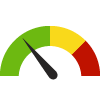




U.S. States
The distribution is based on data from 43 U.S. states and the District of Columbia.

US Value
(3.8%)
The regional value is compared to the national value.

Prior Value
(5.3%)
Prior Value compares a measured value with the previously measured value. Confidence intervals were taken into account in determining the direction of the comparison.

Trend
This comparison measures the indicator’s values over multiple time periods.<br>The Mann-Kendall Test for Statistical Significance is used to evaluate the trend<br>over 4 to 10 periods of measure, subject to data availability and comparability.
City: District of Columbia Teens who Smoke Cigars
City: District of Columbia Teens who Smoke Cigars
16.5%
(2013)
Compared to:



US Value
(12.6%)
The regional value is compared to the national value.

Prior Value
(13.7%)
Prior Value compares a measured value with the previously measured value. Confidence intervals were taken into account in determining the direction of the comparison.
City: District of Columbia Teens who Tried to Quit Smoking
City: District of Columbia Teens who Tried to Quit Smoking
61.6%
(2011)
Compared to:


US Value
(49.9%)
The regional value is compared to the national value.
City: District of Columbia Teens who Use Any Tobacco Products
City: District of Columbia Teens who Use Any Tobacco Products
16.8%
(2011)
Compared to:


US Value
(23.4%)
The regional value is compared to the national value.
City: District of Columbia Youth who have Smoked
City: District of Columbia Youth who have Smoked
3.6%
(2021)
Compared to:



Prior Value
(5.0%)
Prior Value compares a measured value with the previously measured value. Confidence intervals were taken into account in determining the direction of the comparison.

Trend
This comparison measures the indicator’s values over multiple time periods.<br>The Mann-Kendall Test for Statistical Significance is used to evaluate the trend<br>over 4 to 10 periods of measure, subject to data availability and comparability.
City: District of Columbia
Health / Weight Status
Value
Compared to:
City: District of Columbia Adults Who Are Obese
City: District of Columbia Adults Who Are Obese
24.3%
(2022)
Compared to:





U.S. States
The distribution is based on data from 50 U.S. states and the District of Columbia.

US Value
(33.6%)
The regional value is compared to the national value.

Prior Value
(24.7%)
Prior Value compares a measured value with the previously measured value. Confidence intervals were taken into account in determining the direction of the comparison.

Trend
This comparison measures the indicator’s values over multiple time periods.<br>The Mann-Kendall Test for Statistical Significance is used to evaluate the trend<br>over 4 to 10 periods of measure, subject to data availability and comparability.
City: District of Columbia Adults who are Overweight or Obese
City: District of Columbia Adults who are Overweight or Obese
55.2%
(2022)
Compared to:





U.S. States
The distribution is based on data from 50 U.S. states and the District of Columbia.

US Value
(67.7%)
The regional value is compared to the national value.

Prior Value
(55.4%)
Prior Value compares a measured value with the previously measured value. Confidence intervals were not taken into account in determining the direction of the comparison.

Trend
This comparison measures the indicator’s values over multiple time periods.<br>The Mann-Kendall Test for Statistical Significance is used to evaluate the trend<br>over 4 to 10 periods of measure, subject to data availability and comparability.
City: District of Columbia Teens who are Obese: High School Students
City: District of Columbia Teens who are Obese: High School Students
20.4%
(2021)
Compared to:





U.S. States
The distribution is based on data from 44 U.S. states and the District of Columbia.

US Value
(16.3%)
The regional value is compared to the national value.

Prior Value
(17.1%)
Prior Value compares a measured value with the previously measured value. Confidence intervals were taken into account in determining the direction of the comparison.

Trend
This comparison measures the indicator’s values over multiple time periods.<br>The Mann-Kendall Test for Statistical Significance is used to evaluate the trend<br>over 4 to 10 periods of measure, subject to data availability and comparability.
City: District of Columbia Teens who are Overweight
City: District of Columbia Teens who are Overweight
16.9%
(2021)
Compared to:





U.S. States
The distribution is based on data from 44 U.S. states and the District of Columbia.

US Value
(16.0%)
The regional value is compared to the national value.

Prior Value
(17.6%)
Prior Value compares a measured value with the previously measured value. Confidence intervals were taken into account in determining the direction of the comparison.

Trend
This comparison measures the indicator’s values over multiple time periods.<br>The Mann-Kendall Test for Statistical Significance is used to evaluate the trend<br>over 4 to 10 periods of measure, subject to data availability and comparability.
City: District of Columbia Teens who are Overweight or Obese
City: District of Columbia Teens who are Overweight or Obese
37.3%
(2021)
Compared to:





U.S. States
The distribution is based on data from 44 U.S. states and the District of Columbia.

US Value
(32.3%)
The regional value is compared to the national value.

Prior Value
(34.7%)
Prior Value compares a measured value with the previously measured value. Confidence intervals were not taken into account in determining the direction of the comparison.

Trend
This comparison measures the indicator’s values over multiple time periods.<br>The Mann-Kendall Test for Statistical Significance is used to evaluate the trend<br>over 4 to 10 periods of measure, subject to data availability and comparability.
City: District of Columbia Teens who Perceive Themselves as Overweight
City: District of Columbia Teens who Perceive Themselves as Overweight
24.6%
(2013)
Compared to:



US Value
(31.1%)
The regional value is compared to the national value.

Prior Value
(23.6%)
Prior Value compares a measured value with the previously measured value. Confidence intervals were taken into account in determining the direction of the comparison.
City: District of Columbia
Health / Wellness & Lifestyle
Value
Compared to:
City: District of Columbia Frequent Physical Distress
City: District of Columbia Frequent Physical Distress
10.2%
(2019)
Compared to:





U.S. Counties
The distribution is based on data from 3,121 U.S. counties and county equivalents.

U.S. States
The distribution is based on data from 49 U.S. states and the District of Columbia.

US Value
(12.0%)
The regional value is compared to the national value.

Prior Value
(9.4%)
Prior Value compares a measured value with the previously measured value. Confidence intervals were taken into account in determining the direction of the comparison.
City: District of Columbia Insufficient Sleep
City: District of Columbia Insufficient Sleep
31.7%
(2020)
Compared to:

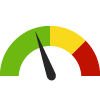




U.S. Counties
The distribution is based on data from 3,140 U.S. counties and county equivalents.

U.S. States
The distribution is based on data from 50 U.S. states and the District of Columbia.

US Value
(33.0%)
The regional value is compared to the national value.

Prior Value
(36.5%)
Prior Value compares a measured value with the previously measured value. Confidence intervals were not taken into account in determining the direction of the comparison.

HP 2030 Target
(26.7%)
City: District of Columbia Poor Physical Health: 14+ Days
City: District of Columbia Poor Physical Health: 14+ Days
7.8%
(2021)
Compared to:



U.S. Counties
The distribution is based on data from 3,074 U.S. counties and county equivalents.

US Value
(10.9%)
The regional value is compared to the national value.
City: District of Columbia Poor Physical Health: Average Number of Days
City: District of Columbia Poor Physical Health: Average Number of Days
2.7
Days
(2021)
Compared to:






U.S. Counties
The distribution is based on data from 3,141 U.S. counties and county equivalents.

U.S. States
The distribution is based on data from 50 U.S. states and the District of Columbia.

US Value
(3.3)
The regional value is compared to the national value.

Prior Value
(2.4)
Prior Value compares a measured value with the previously measured value. Confidence intervals were taken into account in determining the direction of the comparison.

Trend
This comparison measures the indicator’s values over multiple time periods.<br>The Mann-Kendall Test for Statistical Significance is used to evaluate the trend<br>over 4 to 10 periods of measure, subject to data availability and comparability.
City: District of Columbia Self-Reported General Health Assessment: Good or Better
City: District of Columbia Self-Reported General Health Assessment: Good or Better
88.5%
(2022)
Compared to:





U.S. States
The distribution is based on data from 50 U.S. states and the District of Columbia.

US Value
(83.0%)
The regional value is compared to the national value.

Prior Value
(86.4%)
Prior Value compares a measured value with the previously measured value. Confidence intervals were taken into account in determining the direction of the comparison.

Trend
This comparison measures the indicator’s values over multiple time periods.<br>The Mann-Kendall Test for Statistical Significance is used to evaluate the trend<br>over 4 to 10 periods of measure, subject to data availability and comparability.
City: District of Columbia Self-Reported General Health Assessment: Poor or Fair
City: District of Columbia Self-Reported General Health Assessment: Poor or Fair
12.3%
(2021)
Compared to:



U.S. Counties
The distribution is based on data from 3,074 U.S. counties and county equivalents.

US Value
(16.1%)
The regional value is compared to the national value.
City: District of Columbia
Community / Crime & Crime Prevention
Value
Compared to:
City: District of Columbia Age-Adjusted Death Rate due to Homicide
City: District of Columbia Age-Adjusted Death Rate due to Homicide
21.7
Deaths per 100,000 population
(2018-2020)
Compared to:







U.S. Counties
The distribution is based on data from 495 U.S. counties and county equivalents.

U.S. States
The distribution is based on data from 50 U.S. states and the District of Columbia.

US Value
(6.6)
The regional value is compared to the national value.

Prior Value
(18.7)
Prior Value compares a measured value with the previously measured value. Confidence intervals were taken into account in determining the direction of the comparison.

Trend
This comparison measures the indicator’s values over multiple time periods.<br>The Mann-Kendall Test for Statistical Significance is used to evaluate the trend<br>over 4 to 10 periods of measure, subject to data availability and comparability.

HP 2030 Target
(5.5)
<div>IVP-09: Reduce homicides <strong>(LEADING HEALTH INDICATOR)</strong></div>
City: District of Columbia Violent Crime Rate
City: District of Columbia Violent Crime Rate
812.3
Crimes per 100,000 population
(2022)
Compared to:





U.S. States
The distribution is based on data from 50 U.S. states and the District of Columbia.

US Value
(380.7)
The regional value is compared to the national value.

Prior Value
(951.3)
Prior Value compares a measured value with the previously measured value. Confidence intervals were not taken into account in determining the direction of the comparison.

Trend
This comparison measures the indicator’s values over multiple time periods.<br>The Mann-Kendall Test for Statistical Significance is used to evaluate the trend<br>over 4 to 10 periods of measure, subject to data availability and comparability.
City: District of Columbia
Community / Demographics
Value
Compared to:
City: District of Columbia Average Household Size
City: District of Columbia Average Household Size
2.00
Persons per household
(2018-2022)
Compared to:



US Value
(2.60)
The regional value is compared to the national value.

Trend
This comparison measures the indicator’s values over multiple time periods.<br>The Mann-Kendall Test for Statistical Significance is used to evaluate the trend<br>over 4 to 10 periods of measure, subject to data availability and comparability.
City: District of Columbia Foreign Born Persons
City: District of Columbia Foreign Born Persons
13.4%
(2018-2022)
Compared to:



US Value
(13.7%)
The regional value is compared to the national value.

Trend
This comparison measures the indicator’s values over multiple time periods.<br>The Mann-Kendall Test for Statistical Significance is used to evaluate the trend<br>over 4 to 10 periods of measure, subject to data availability and comparability.
City: District of Columbia Population Over Age 65 (Count)
City: District of Columbia Population Over Age 65 (Count)
84,451
People
(2018-2022)
Compared to:


Trend
This comparison measures the indicator’s values over multiple time periods.<br>The Mann-Kendall Test for Statistical Significance is used to evaluate the trend<br>over 4 to 10 periods of measure, subject to data availability and comparability.
City: District of Columbia Veteran Population
City: District of Columbia Veteran Population
4.0%
(2018-2022)
Compared to:



US Value
(6.6%)
The regional value is compared to the national value.

Trend
This comparison measures the indicator’s values over multiple time periods.<br>The Mann-Kendall Test for Statistical Significance is used to evaluate the trend<br>over 4 to 10 periods of measure, subject to data availability and comparability.
City: District of Columbia
Community / Public Safety
Value
Compared to:
City: District of Columbia Adult Seat Belt Use
City: District of Columbia Adult Seat Belt Use
95.2%
(2017)
Compared to:




US Value
(93.3% in 2011)
The regional value is compared to the national value.

Prior Value
(94.9%)
Prior Value compares a measured value with the previously measured value. Confidence intervals were not taken into account in determining the direction of the comparison.

HP 2020 Target
(92%)
City: District of Columbia Age-Adjusted Death Rate due to Motor Vehicle Traffic Collisions
City: District of Columbia Age-Adjusted Death Rate due to Motor Vehicle Traffic Collisions
5.9
Deaths per 100,000 population
(2018-2020)
Compared to:







U.S. Counties
The distribution is based on data from 1,266 U.S. counties and county equivalents.

U.S. States
The distribution is based on data from 50 U.S. states and the District of Columbia.

US Value
(11.4)
The regional value is compared to the national value.

Prior Value
(5.4)
Prior Value compares a measured value with the previously measured value. Confidence intervals were taken into account in determining the direction of the comparison.

Trend
This comparison measures the indicator’s values over multiple time periods.<br>The Mann-Kendall Test for Statistical Significance is used to evaluate the trend<br>over 4 to 10 periods of measure, subject to data availability and comparability.

HP 2030 Target
(10.1)
City: District of Columbia Alcohol-Impaired Driving Deaths
City: District of Columbia Alcohol-Impaired Driving Deaths
25.3%
Percent of driving deaths with alcohol involvement
(2017-2021)
Compared to:






U.S. Counties
The distribution is based on data from 3,116 U.S. counties and county equivalents.

U.S. States
The distribution is based on data from 50 U.S. states and the District of Columbia.

US Value
(26.3%)
The regional value is compared to the national value.

Prior Value
(29.1%)
Prior Value compares a measured value with the previously measured value. Confidence intervals were taken into account in determining the direction of the comparison.

Trend
This comparison measures the indicator’s values over multiple time periods.<br>The Mann-Kendall Test for Statistical Significance is used to evaluate the trend<br>over 4 to 10 periods of measure, subject to data availability and comparability.
City: District of Columbia Teens Rode with Someone who has been Drinking
City: District of Columbia Teens Rode with Someone who has been Drinking
25.5%
(2013)
Compared to:



US Value
(21.9%)
The regional value is compared to the national value.

Prior Value
(22.8%)
Prior Value compares a measured value with the previously measured value. Confidence intervals were taken into account in determining the direction of the comparison.
City: District of Columbia Teens Wearing Seat Belt
City: District of Columbia Teens Wearing Seat Belt
15.0%
(2013)
Compared to:



US Value
(7.6%)
The regional value is compared to the national value.

Prior Value
(10.9%)
Prior Value compares a measured value with the previously measured value. Confidence intervals were taken into account in determining the direction of the comparison.
City: District of Columbia Teens who Drink and Drive
City: District of Columbia Teens who Drink and Drive
11.2%
(2013)
Compared to:



US Value
(10.0%)
The regional value is compared to the national value.

Prior Value
(5.4%)
Prior Value compares a measured value with the previously measured value. Confidence intervals were taken into account in determining the direction of the comparison.
City: District of Columbia
Community / Social Environment
Value
Compared to:
City: District of Columbia Child Abuse Rate
City: District of Columbia Child Abuse Rate
14.0
Cases per 1,000 children
(2019)
Compared to:



Prior Value
(13.0)
Prior Value compares a measured value with the previously measured value. Confidence intervals were not taken into account in determining the direction of the comparison.

Trend
This comparison measures the indicator’s values over multiple time periods.<br>The Mann-Kendall Test for Statistical Significance is used to evaluate the trend<br>over 4 to 10 periods of measure, subject to data availability and comparability.
City: District of Columbia Children in Single-Parent Households
City: District of Columbia Children in Single-Parent Households
44.8%
(2018-2022)
Compared to:





U.S. Counties
The distribution is based on data from 3,132 U.S. counties and county equivalents.

U.S. States
The distribution is based on data from 50 U.S. states and the District of Columbia.

US Value
(24.9%)
The regional value is compared to the national value.

Trend
This comparison measures the indicator’s values over multiple time periods.<br>The Mann-Kendall Test for Statistical Significance is used to evaluate the trend<br>over 4 to 10 periods of measure, subject to data availability and comparability.
City: District of Columbia Non-Marital Births
City: District of Columbia Non-Marital Births
46.5%
(2022)
Compared to:



Prior Value
(43.6%)
Prior Value compares a measured value with the previously measured value. Confidence intervals were not taken into account in determining the direction of the comparison.

Trend
This comparison measures the indicator’s values over multiple time periods.<br>The Mann-Kendall Test for Statistical Significance is used to evaluate the trend<br>over 4 to 10 periods of measure, subject to data availability and comparability.
City: District of Columbia Social Associations
City: District of Columbia Social Associations
29.6
Membership associations per 10,000 population
(2021)
Compared to:






U.S. Counties
The distribution is based on data from 3,141 U.S. counties and county equivalents.

U.S. States
The distribution is based on data from 50 U.S. states and the District of Columbia.

US Value
(9.1)
The regional value is compared to the national value.

Prior Value
(28.1)
Prior Value compares a measured value with the previously measured value. Confidence intervals were not taken into account in determining the direction of the comparison.

Trend
This comparison measures the indicator’s values over multiple time periods.<br>The Mann-Kendall Test for Statistical Significance is used to evaluate the trend<br>over 4 to 10 periods of measure, subject to data availability and comparability.
City: District of Columbia Substantiated Referrals for Child Abuse
City: District of Columbia Substantiated Referrals for Child Abuse
893.0
Referrals
(FY 2015)
Compared to:



Prior Value
(972.0)
Prior Value compares a measured value with the previously measured value. Confidence intervals were not taken into account in determining the direction of the comparison.

Trend
This comparison measures the indicator’s values over multiple time periods.<br>The Mann-Kendall Test for Statistical Significance is used to evaluate the trend<br>over 4 to 10 periods of measure, subject to data availability and comparability.
City: District of Columbia Teens who Used 3+ Hours of Computer
City: District of Columbia Teens who Used 3+ Hours of Computer
40.4%
(2013)
Compared to:



US Value
(41.3%)
The regional value is compared to the national value.

Prior Value
(35.6%)
Prior Value compares a measured value with the previously measured value. Confidence intervals were taken into account in determining the direction of the comparison.
City: District of Columbia Teens who Watched 3+ hours of Television
City: District of Columbia Teens who Watched 3+ hours of Television
40.1%
(2013)
Compared to:



US Value
(32.5%)
The regional value is compared to the national value.

Prior Value
(38.3%)
Prior Value compares a measured value with the previously measured value. Confidence intervals were taken into account in determining the direction of the comparison.
City: District of Columbia Youth Who Watch 3+ Hours of Television
City: District of Columbia Youth Who Watch 3+ Hours of Television
45.1%
(2010)
Compared to:


Prior Value
(54.1%)
Prior Value compares a measured value with the previously measured value. Confidence intervals were taken into account in determining the direction of the comparison.
City: District of Columbia
Community / Transportation
Value
Compared to:
City: District of Columbia Households without a Vehicle
City: District of Columbia Households without a Vehicle
35.7%
(2018-2022)
Compared to:





U.S. Counties
The distribution is based on data from 3,133 U.S. counties and county equivalents.

U.S. States
The distribution is based on data from 50 U.S. states and the District of Columbia.

US Value
(8.3%)
The regional value is compared to the national value.

Trend
This comparison measures the indicator’s values over multiple time periods.<br>The Mann-Kendall Test for Statistical Significance is used to evaluate the trend<br>over 4 to 10 periods of measure, subject to data availability and comparability.
City: District of Columbia Mean Travel Time to Work
City: District of Columbia Mean Travel Time to Work
30.5
Minutes
(2018-2022)
Compared to:





U.S. Counties
The distribution is based on data from 3,131 U.S. counties and county equivalents.

U.S. States
The distribution is based on data from 50 U.S. states and the District of Columbia.

US Value
(26.7)
The regional value is compared to the national value.

Trend
This comparison measures the indicator’s values over multiple time periods.<br>The Mann-Kendall Test for Statistical Significance is used to evaluate the trend<br>over 4 to 10 periods of measure, subject to data availability and comparability.
City: District of Columbia Solo Drivers with a Long Commute
City: District of Columbia Solo Drivers with a Long Commute
49.5%
(2018-2022)
Compared to:






U.S. Counties
The distribution is based on data from 3,141 U.S. counties and county equivalents.

U.S. States
The distribution is based on data from 50 U.S. states and the District of Columbia.

US Value
(36.4%)
The regional value is compared to the national value.

Prior Value
(49.3%)
Prior Value compares a measured value with the previously measured value. Confidence intervals were taken into account in determining the direction of the comparison.

Trend
This comparison measures the indicator’s values over multiple time periods.<br>The Mann-Kendall Test for Statistical Significance is used to evaluate the trend<br>over 4 to 10 periods of measure, subject to data availability and comparability.
City: District of Columbia Workers Commuting by Public Transportation
City: District of Columbia Workers Commuting by Public Transportation
24.7%
(2018-2022)
Compared to:






U.S. Counties
(2015-2019)
The distribution is based on data from 3,142 U.S. counties and county equivalents.

U.S. States
The distribution is based on data from 50 U.S. states and the District of Columbia.

US Value
(3.8%)
The regional value is compared to the national value.

Trend
This comparison measures the indicator’s values over multiple time periods.<br>The Mann-Kendall Test for Statistical Significance is used to evaluate the trend<br>over 4 to 10 periods of measure, subject to data availability and comparability.

HP 2030 Target
(5.3%)
City: District of Columbia Workers who Drive Alone to Work
City: District of Columbia Workers who Drive Alone to Work
29.7%
(2018-2022)
Compared to:





U.S. Counties
The distribution is based on data from 3,133 U.S. counties and county equivalents.

U.S. States
The distribution is based on data from 50 U.S. states and the District of Columbia.

US Value
(71.7%)
The regional value is compared to the national value.

Trend
This comparison measures the indicator’s values over multiple time periods.<br>The Mann-Kendall Test for Statistical Significance is used to evaluate the trend<br>over 4 to 10 periods of measure, subject to data availability and comparability.
City: District of Columbia
Economy / Employment
Value
Compared to:
City: District of Columbia Employer Establishments
City: District of Columbia Employer Establishments
24,083
Number of Establishments
(2020)
Compared to:



Prior Value
(23,993)
Prior Value compares a measured value with the previously measured value. Confidence intervals were not taken into account in determining the direction of the comparison.

Trend
This comparison measures the indicator’s values over multiple time periods.<br>The Mann-Kendall Test for Statistical Significance is used to evaluate the trend<br>over 4 to 10 periods of measure, subject to data availability and comparability.
City: District of Columbia Female Population 16+ in Civilian Labor Force
City: District of Columbia Female Population 16+ in Civilian Labor Force
69.8%
(2018-2022)
Compared to:





U.S. Counties
The distribution is based on data from 3,133 U.S. counties and county equivalents.

U.S. States
The distribution is based on data from 50 U.S. states and the District of Columbia.

US Value
(58.5%)
The regional value is compared to the national value.

Trend
This comparison measures the indicator’s values over multiple time periods.<br>The Mann-Kendall Test for Statistical Significance is used to evaluate the trend<br>over 4 to 10 periods of measure, subject to data availability and comparability.
City: District of Columbia Population 16+ in Civilian Labor Force
City: District of Columbia Population 16+ in Civilian Labor Force
66.3%
(2018-2022)
Compared to:





U.S. Counties
The distribution is based on data from 3,133 U.S. counties and county equivalents.

U.S. States
The distribution is based on data from 50 U.S. states and the District of Columbia.

US Value
(59.6%)
The regional value is compared to the national value.

Trend
This comparison measures the indicator’s values over multiple time periods.<br>The Mann-Kendall Test for Statistical Significance is used to evaluate the trend<br>over 4 to 10 periods of measure, subject to data availability and comparability.
City: District of Columbia Size of Labor Force
City: District of Columbia Size of Labor Force
404,669
Persons
(January 2024)
Compared to:



Prior Value
(402,344)
Prior Value compares a measured value with the previously measured value. Confidence intervals were not taken into account in determining the direction of the comparison.

Trend
This comparison measures the indicator’s values over multiple time periods.<br>The Mann-Kendall Test for Statistical Significance is used to evaluate the trend<br>over 4 to 10 periods of measure, subject to data availability and comparability.
City: District of Columbia Total Employment
City: District of Columbia Total Employment
483,307
Paid Employees
(2021)
Compared to:



Prior Value
(543,174)
Prior Value compares a measured value with the previously measured value. Confidence intervals were not taken into account in determining the direction of the comparison.

Trend
This comparison measures the indicator’s values over multiple time periods.<br>The Mann-Kendall Test for Statistical Significance is used to evaluate the trend<br>over 4 to 10 periods of measure, subject to data availability and comparability.
City: District of Columbia Total Employment Change
City: District of Columbia Total Employment Change
-11.0%
(2020-2021)
Compared to:






U.S. Counties
The distribution is based on data from 3,140 U.S. counties and county equivalents.

U.S. States
The distribution is based on data from 50 U.S. states and the District of Columbia.

US Value
(-4.3%)
The regional value is compared to the national value.

Prior Value
(2.7%)
Prior Value compares a measured value with the previously measured value. Confidence intervals were not taken into account in determining the direction of the comparison.

Trend
This comparison measures the indicator’s values over multiple time periods.<br>The Mann-Kendall Test for Statistical Significance is used to evaluate the trend<br>over 4 to 10 periods of measure, subject to data availability and comparability.
City: District of Columbia Unemployed Workers in Civilian Labor Force
City: District of Columbia Unemployed Workers in Civilian Labor Force
5.2%
(January 2024)
Compared to:






U.S. Counties
The distribution is based on non-seasonally-adjusted data from 3,140 U.S. counties and county equivalents.

U.S. States
The distribution is based on non-seasonally-adjusted data from 50 U.S. states and the District of Columbia.

US Value
(4.1%)
The regional value is compared to the national value.

Prior Value
(4.7%)
Prior Value compares a measured value with the previously measured value. Confidence intervals were not taken into account in determining the direction of the comparison.

Trend
This comparison measures the indicator’s values over multiple time periods.<br>The Mann-Kendall Test for Statistical Significance is used to evaluate the trend<br>over 4 to 10 periods of measure, subject to data availability and comparability.
City: District of Columbia
Economy / Food Insecurity
Value
Compared to:
City: District of Columbia Child Food Insecurity Rate
City: District of Columbia Child Food Insecurity Rate
14.0%
(2021)
Compared to:






U.S. Counties
The distribution is based on data from 3,140 U.S. counties and county equivalents.

U.S. States
The distribution is based on data from 50 U.S. states and the District of Columbia.

US Value
(12.8%)
The regional value is compared to the national value.

Prior Value
(16.2%)
Prior Value compares a measured value with the previously measured value. Confidence intervals were not taken into account in determining the direction of the comparison.

Trend
This comparison measures the indicator’s values over multiple time periods.<br>The Mann-Kendall Test for Statistical Significance is used to evaluate the trend<br>over 4 to 10 periods of measure, subject to data availability and comparability.
City: District of Columbia Food Insecure Children Likely Ineligible for Assistance
City: District of Columbia Food Insecure Children Likely Ineligible for Assistance
23%
(2021)
Compared to:






U.S. Counties
The distribution is based on data from 3,134 U.S. counties and county equivalents.

U.S. States
The distribution is based on data from 50 U.S. states and the District of Columbia.

US Value
(25%)
The regional value is compared to the national value.

Prior Value
(20%)
Prior Value compares a measured value with the previously measured value. Confidence intervals were not taken into account in determining the direction of the comparison.

Trend
This comparison measures the indicator’s values over multiple time periods.<br>The Mann-Kendall Test for Statistical Significance is used to evaluate the trend<br>over 4 to 10 periods of measure, subject to data availability and comparability.
City: District of Columbia Food Insecurity Rate
City: District of Columbia Food Insecurity Rate
9.1%
(2021)
Compared to:






U.S. Counties
The distribution is based on data from 3,140 U.S. counties and county equivalents.

U.S. States
The distribution is based on data from 50 U.S. states and the District of Columbia.

US Value
(10.4%)
The regional value is compared to the national value.

Prior Value
(9.8%)
Prior Value compares a measured value with the previously measured value. Confidence intervals were not taken into account in determining the direction of the comparison.

Trend
This comparison measures the indicator’s values over multiple time periods.<br>The Mann-Kendall Test for Statistical Significance is used to evaluate the trend<br>over 4 to 10 periods of measure, subject to data availability and comparability.
City: District of Columbia Households Receiving SNAP with Children
City: District of Columbia Households Receiving SNAP with Children
42.7%
(2018-2022)
Compared to:



US Value
(47.9%)
The regional value is compared to the national value.

Trend
This comparison measures the indicator’s values over multiple time periods.<br>The Mann-Kendall Test for Statistical Significance is used to evaluate the trend<br>over 4 to 10 periods of measure, subject to data availability and comparability.
City: District of Columbia Households Receiving SNAP with Children (Count)
City: District of Columbia Households Receiving SNAP with Children (Count)
17,078
Households
(2018-2022)
Compared to:


Trend
This comparison measures the indicator’s values over multiple time periods.<br>The Mann-Kendall Test for Statistical Significance is used to evaluate the trend<br>over 4 to 10 periods of measure, subject to data availability and comparability.
City: District of Columbia Projected Child Food Insecurity Rate
City: District of Columbia Projected Child Food Insecurity Rate
18.7%
(2021)
Compared to:




U.S. Counties
The distribution is based on data from 3,142 U.S. counties and county equivalents.

U.S. States
The distribution is based on data from 50 U.S. states and the District of Columbia.

Prior Value
(27.5%)
Prior Value compares a measured value with the previously measured value. Confidence intervals were not taken into account in determining the direction of the comparison.
City: District of Columbia Projected Food Insecurity Rate
City: District of Columbia Projected Food Insecurity Rate
11.7%
(2021)
Compared to:




U.S. Counties
The distribution is based on data from 3,142 U.S. counties and county equivalents.

U.S. States
The distribution is based on data from 50 U.S. states and the District of Columbia.

Prior Value
(16.0%)
Prior Value compares a measured value with the previously measured value. Confidence intervals were not taken into account in determining the direction of the comparison.
City: District of Columbia Students Eligible for the Free Lunch Program
City: District of Columbia Students Eligible for the Free Lunch Program
64.3%
(2015-2016)
Compared to:






U.S. Counties
The distribution is based on data from 2,854 U.S. counties and county equivalents.

U.S. States
The distribution is based on data from 46 U.S. states and the District of Columbia.

US Value
(42.6%)
The regional value is compared to the national value.

Prior Value
(90.2%)
Prior Value compares a measured value with the previously measured value. Confidence intervals were not taken into account in determining the direction of the comparison.

Trend
This comparison measures the indicator’s values over multiple time periods.<br>The Mann-Kendall Test for Statistical Significance is used to evaluate the trend<br>over 4 to 10 periods of measure, subject to data availability and comparability.
City: District of Columbia
Economy / Government Assistance
Value
Compared to:
City: District of Columbia Households with Cash Public Assistance Income
City: District of Columbia Households with Cash Public Assistance Income
4.0%
(2018-2022)
Compared to:





U.S. Counties
The distribution is based on data from 2,923 U.S. counties and county equivalents.

U.S. States
The distribution is based on data from 50 U.S. states and the District of Columbia.

US Value
(2.7%)
The regional value is compared to the national value.

Trend
This comparison measures the indicator’s values over multiple time periods.<br>The Mann-Kendall Test for Statistical Significance is used to evaluate the trend<br>over 4 to 10 periods of measure, subject to data availability and comparability.
City: District of Columbia
Economy / Housing & Homes
Value
Compared to:
City: District of Columbia Homeowner Vacancy Rate
City: District of Columbia Homeowner Vacancy Rate
1.6%
(2018-2022)
Compared to:





U.S. Counties
The distribution is based on data from 3,132 U.S. counties and county equivalents.

U.S. States
The distribution is based on data from 50 U.S. states and the District of Columbia.

US Value
(1.1%)
The regional value is compared to the national value.

Trend
This comparison measures the indicator’s values over multiple time periods.<br>The Mann-Kendall Test for Statistical Significance is used to evaluate the trend<br>over 4 to 10 periods of measure, subject to data availability and comparability.
City: District of Columbia Homeownership
City: District of Columbia Homeownership
37.4%
(2018-2022)
Compared to:





U.S. Counties
The distribution is based on data from 3,133 U.S. counties and county equivalents.

U.S. States
The distribution is based on data from 50 U.S. states and the District of Columbia.

US Value
(57.8%)
The regional value is compared to the national value.

Trend
This comparison measures the indicator’s values over multiple time periods.<br>The Mann-Kendall Test for Statistical Significance is used to evaluate the trend<br>over 4 to 10 periods of measure, subject to data availability and comparability.
City: District of Columbia Median Household Gross Rent
City: District of Columbia Median Household Gross Rent
$1,817
(2018-2022)
Compared to:



US Value
($1,268)
The regional value is compared to the national value.

Trend
This comparison measures the indicator’s values over multiple time periods.<br>The Mann-Kendall Test for Statistical Significance is used to evaluate the trend<br>over 4 to 10 periods of measure, subject to data availability and comparability.
City: District of Columbia Median Monthly Owner Costs for Households without a Mortgage
City: District of Columbia Median Monthly Owner Costs for Households without a Mortgage
$821
(2018-2022)
Compared to:



US Value
($584)
The regional value is compared to the national value.

Trend
This comparison measures the indicator’s values over multiple time periods.<br>The Mann-Kendall Test for Statistical Significance is used to evaluate the trend<br>over 4 to 10 periods of measure, subject to data availability and comparability.
City: District of Columbia Mortgaged Owners Median Monthly Household Costs
City: District of Columbia Mortgaged Owners Median Monthly Household Costs
$2,958
(2018-2022)
Compared to:



US Value
($1,828)
The regional value is compared to the national value.

Trend
This comparison measures the indicator’s values over multiple time periods.<br>The Mann-Kendall Test for Statistical Significance is used to evaluate the trend<br>over 4 to 10 periods of measure, subject to data availability and comparability.
City: District of Columbia Mortgaged Owners Spending 30% or More of Household Income on Housing
City: District of Columbia Mortgaged Owners Spending 30% or More of Household Income on Housing
26.5%
(2022)
Compared to:







U.S. Counties
The distribution is based on data from 828 U.S. counties and county equivalents.

U.S. States
The distribution is based on data from 50 U.S. states and the District of Columbia.

US Value
(27.8%)
The regional value is compared to the national value.

Prior Value
(26.3%)
Prior Value compares a measured value with the previously measured value. Confidence intervals were not taken into account in determining the direction of the comparison.

Trend
This comparison measures the indicator’s values over multiple time periods.<br>The Mann-Kendall Test for Statistical Significance is used to evaluate the trend<br>over 4 to 10 periods of measure, subject to data availability and comparability.

HP 2030 Target
(25.5%)
City: District of Columbia Overcrowded Households
City: District of Columbia Overcrowded Households
3.7%
(2018-2022)
Compared to:


US Value
(3.3% in 2016-2020)
The regional value is compared to the national value.
City: District of Columbia Renters Spending 30% or More of Household Income on Rent
City: District of Columbia Renters Spending 30% or More of Household Income on Rent
46.5%
(2018-2022)
Compared to:






U.S. Counties
The distribution is based on data from 3,132 U.S. counties and county equivalents.

U.S. States
The distribution is based on data from 50 U.S. states and the District of Columbia.

US Value
(49.9%)
The regional value is compared to the national value.

Trend
This comparison measures the indicator’s values over multiple time periods.<br>The Mann-Kendall Test for Statistical Significance is used to evaluate the trend<br>over 4 to 10 periods of measure, subject to data availability and comparability.

HP 2030 Target
(25.5%)
City: District of Columbia Severe Housing Problems
City: District of Columbia Severe Housing Problems
19.4%
(2016-2020)
Compared to:






U.S. Counties
The distribution is based on data from 3,141 U.S. counties and county equivalents.

U.S. States
The distribution is based on data from 50 U.S. states and the District of Columbia.

US Value
(16.7%)
The regional value is compared to the national value.

Prior Value
(19.8%)
Prior Value compares a measured value with the previously measured value. Confidence intervals were taken into account in determining the direction of the comparison.

Trend
This comparison measures the indicator’s values over multiple time periods.<br>The Mann-Kendall Test for Statistical Significance is used to evaluate the trend<br>over 4 to 10 periods of measure, subject to data availability and comparability.
City: District of Columbia
Economy / Income
Value
Compared to:
City: District of Columbia Households that are Above the Asset Limited, Income Constrained, Employed (ALICE) Threshold
City: District of Columbia Households that are Above the Asset Limited, Income Constrained, Employed (ALICE) Threshold
57.7%
(2021)
Compared to:


Prior Value
(54.7%)
Prior Value compares a measured value with the previously measured value. Confidence intervals were not taken into account in determining the direction of the comparison.
City: District of Columbia Households that are Asset Limited, Income Constrained, Employed (ALICE)
City: District of Columbia Households that are Asset Limited, Income Constrained, Employed (ALICE)
27.7%
(2021)
Compared to:


Prior Value
(30.2%)
Prior Value compares a measured value with the previously measured value. Confidence intervals were not taken into account in determining the direction of the comparison.
City: District of Columbia Income Inequality
City: District of Columbia Income Inequality
0.517
(2018-2022)
Compared to:





U.S. Counties
The distribution is based on data from 3,133 U.S. counties and county equivalents.

U.S. States
The distribution is based on data from 50 U.S. states and the District of Columbia.

US Value
(0.483)
The regional value is compared to the national value.

Trend
This comparison measures the indicator’s values over multiple time periods.<br>The Mann-Kendall Test for Statistical Significance is used to evaluate the trend<br>over 4 to 10 periods of measure, subject to data availability and comparability.
City: District of Columbia Median Household Income
City: District of Columbia Median Household Income
$101,722
(2018-2022)
Compared to:





U.S. Counties
The distribution is based on data from 3,132 U.S. counties and county equivalents.

U.S. States
The distribution is based on data from 50 U.S. states and the District of Columbia.

US Value
($75,149)
The regional value is compared to the national value.

Trend
This comparison measures the indicator’s values over multiple time periods.<br>The Mann-Kendall Test for Statistical Significance is used to evaluate the trend<br>over 4 to 10 periods of measure, subject to data availability and comparability.
City: District of Columbia Per Capita Income
City: District of Columbia Per Capita Income
$71,297
(2018-2022)
Compared to:





U.S. Counties
The distribution is based on data from 3,133 U.S. counties and county equivalents.

U.S. States
The distribution is based on data from 50 U.S. states and the District of Columbia.

US Value
($41,261)
The regional value is compared to the national value.

Trend
This comparison measures the indicator’s values over multiple time periods.<br>The Mann-Kendall Test for Statistical Significance is used to evaluate the trend<br>over 4 to 10 periods of measure, subject to data availability and comparability.
City: District of Columbia
Economy / Poverty
Value
Compared to:
City: District of Columbia Children Living Below Poverty Level
City: District of Columbia Children Living Below Poverty Level
21.4%
(2018-2022)
Compared to:





U.S. Counties
The distribution is based on data from 3,132 U.S. counties and county equivalents.

U.S. States
The distribution is based on data from 50 U.S. states and the District of Columbia.

US Value
(16.7%)
The regional value is compared to the national value.

Trend
This comparison measures the indicator’s values over multiple time periods.<br>The Mann-Kendall Test for Statistical Significance is used to evaluate the trend<br>over 4 to 10 periods of measure, subject to data availability and comparability.
City: District of Columbia Families Living Below Poverty Level
City: District of Columbia Families Living Below Poverty Level
10.8%
(2018-2022)
Compared to:





U.S. Counties
The distribution is based on data from 3,104 U.S. counties and county equivalents.

U.S. States
The distribution is based on data from 50 U.S. states and the District of Columbia.

US Value
(8.8%)
The regional value is compared to the national value.

Trend
This comparison measures the indicator’s values over multiple time periods.<br>The Mann-Kendall Test for Statistical Significance is used to evaluate the trend<br>over 4 to 10 periods of measure, subject to data availability and comparability.
City: District of Columbia Households Living Below Poverty Level
City: District of Columbia Households Living Below Poverty Level
14.7%
(2021)
Compared to:


Prior Value
(15.1%)
Prior Value compares a measured value with the previously measured value. Confidence intervals were not taken into account in determining the direction of the comparison.
City: District of Columbia People 65+ Living Below Poverty Level
City: District of Columbia People 65+ Living Below Poverty Level
14.2%
(2018-2022)
Compared to:





U.S. Counties
The distribution is based on data from 3,133 U.S. counties and county equivalents.

U.S. States
The distribution is based on data from 50 U.S. states and the District of Columbia.

US Value
(10.0%)
The regional value is compared to the national value.

Trend
This comparison measures the indicator’s values over multiple time periods.<br>The Mann-Kendall Test for Statistical Significance is used to evaluate the trend<br>over 4 to 10 periods of measure, subject to data availability and comparability.
City: District of Columbia People 65+ Living Below Poverty Level (Count)
City: District of Columbia People 65+ Living Below Poverty Level (Count)
11,672
People
(2018-2022)
Compared to:


Trend
This comparison measures the indicator’s values over multiple time periods.<br>The Mann-Kendall Test for Statistical Significance is used to evaluate the trend<br>over 4 to 10 periods of measure, subject to data availability and comparability.
City: District of Columbia People Living 200% Above Poverty Level
City: District of Columbia People Living 200% Above Poverty Level
74.6%
(2018-2022)
Compared to:





U.S. Counties
The distribution is based on data from 3,133 U.S. counties and county equivalents.

U.S. States
The distribution is based on data from 50 U.S. states and the District of Columbia.

US Value
(71.2%)
The regional value is compared to the national value.

Trend
This comparison measures the indicator’s values over multiple time periods.<br>The Mann-Kendall Test for Statistical Significance is used to evaluate the trend<br>over 4 to 10 periods of measure, subject to data availability and comparability.
City: District of Columbia People Living Below Poverty Level
City: District of Columbia People Living Below Poverty Level
15.1%
(2018-2022)
Compared to:






U.S. Counties
The distribution is based on data from 3,133 U.S. counties and county equivalents.

U.S. States
The distribution is based on data from 50 U.S. states and the District of Columbia.

US Value
(12.5%)
The regional value is compared to the national value.

Trend
This comparison measures the indicator’s values over multiple time periods.<br>The Mann-Kendall Test for Statistical Significance is used to evaluate the trend<br>over 4 to 10 periods of measure, subject to data availability and comparability.

HP 2030 Target
(8.0%)
City: District of Columbia Young Children Living Below Poverty Level
City: District of Columbia Young Children Living Below Poverty Level
18.2%
(2018-2022)
Compared to:





U.S. Counties
The distribution is based on data from 3,131 U.S. counties and county equivalents.

U.S. States
The distribution is based on data from 50 U.S. states and the District of Columbia.

US Value
(18.1%)
The regional value is compared to the national value.

Trend
This comparison measures the indicator’s values over multiple time periods.<br>The Mann-Kendall Test for Statistical Significance is used to evaluate the trend<br>over 4 to 10 periods of measure, subject to data availability and comparability.
City: District of Columbia Youth not in School or Working
City: District of Columbia Youth not in School or Working
3.5%
(2018-2022)
Compared to:





U.S. Counties
The distribution is based on data from 3,130 U.S. counties and county equivalents.

U.S. States
The distribution is based on data from 50 U.S. states and the District of Columbia.

US Value
(1.8%)
The regional value is compared to the national value.

Trend
This comparison measures the indicator’s values over multiple time periods.<br>The Mann-Kendall Test for Statistical Significance is used to evaluate the trend<br>over 4 to 10 periods of measure, subject to data availability and comparability.
City: District of Columbia
Education / Childcare & Early Childhood Education
Value
Compared to:
City: District of Columbia Child Care Centers
City: District of Columbia Child Care Centers
8.3
Per 1,000 population under age 5
(2022)
Compared to:



US Value
(7.0)
The regional value is compared to the national value.

Prior Value
(6.2)
Prior Value compares a measured value with the previously measured value. Confidence intervals were not taken into account in determining the direction of the comparison.
City: District of Columbia
Education / Educational Attainment
Value
Compared to:
City: District of Columbia People 25+ with a Bachelor's Degree or Higher
City: District of Columbia People 25+ with a Bachelor's Degree or Higher
62.6%
(2018-2022)
Compared to:





U.S. Counties
The distribution is based on data from 3,133 U.S. counties and county equivalents.

U.S. States
The distribution is based on data from 50 U.S. states and the District of Columbia.

US Value
(34.3%)
The regional value is compared to the national value.

Trend
This comparison measures the indicator’s values over multiple time periods.<br>The Mann-Kendall Test for Statistical Significance is used to evaluate the trend<br>over 4 to 10 periods of measure, subject to data availability and comparability.
City: District of Columbia People 25+ with a High School Diploma or Higher
City: District of Columbia People 25+ with a High School Diploma or Higher
92.7%
(2018-2022)
Compared to:





U.S. Counties
The distribution is based on data from 3,133 U.S. counties and county equivalents.

U.S. States
The distribution is based on data from 50 U.S. states and the District of Columbia.

US Value
(89.1%)
The regional value is compared to the national value.

Trend
This comparison measures the indicator’s values over multiple time periods.<br>The Mann-Kendall Test for Statistical Significance is used to evaluate the trend<br>over 4 to 10 periods of measure, subject to data availability and comparability.
City: District of Columbia
Education / School Environment
Value
Compared to:
City: District of Columbia Student-to-Teacher Ratio
City: District of Columbia Student-to-Teacher Ratio
11.3
Students per teacher
(2022-2023)
Compared to:






U.S. Counties
The distribution is based on data from 3,125 U.S. counties and county equivalents.

U.S. States
The distribution is based on data from 50 U.S. states and the District of Columbia.

US Value
(15.4)
The regional value is compared to the national value.

Prior Value
(11.4)
Prior Value compares a measured value with the previously measured value. Confidence intervals were not taken into account in determining the direction of the comparison.

Trend
This comparison measures the indicator’s values over multiple time periods.<br>The Mann-Kendall Test for Statistical Significance is used to evaluate the trend<br>over 4 to 10 periods of measure, subject to data availability and comparability.
City: District of Columbia
Education / Student Performance K-12
Value
Compared to:
City: District of Columbia 4th Grade Students Proficient in Math
City: District of Columbia 4th Grade Students Proficient in Math
22.8%
(2022)
Compared to:



Prior Value
(38.5%)
Prior Value compares a measured value with the previously measured value. Confidence intervals were not taken into account in determining the direction of the comparison.

Trend
This comparison measures the indicator’s values over multiple time periods.<br>The Mann-Kendall Test for Statistical Significance is used to evaluate the trend<br>over 4 to 10 periods of measure, subject to data availability and comparability.
City: District of Columbia 4th Grade Students Proficient in Reading
City: District of Columbia 4th Grade Students Proficient in Reading
30.4%
(2022)
Compared to:



Prior Value
(38.2%)
Prior Value compares a measured value with the previously measured value. Confidence intervals were not taken into account in determining the direction of the comparison.

Trend
This comparison measures the indicator’s values over multiple time periods.<br>The Mann-Kendall Test for Statistical Significance is used to evaluate the trend<br>over 4 to 10 periods of measure, subject to data availability and comparability.
City: District of Columbia 8th Grade Students Proficient in Math
City: District of Columbia 8th Grade Students Proficient in Math
10.6%
(2022)
Compared to:



Prior Value
(17.1%)
Prior Value compares a measured value with the previously measured value. Confidence intervals were not taken into account in determining the direction of the comparison.

Trend
This comparison measures the indicator’s values over multiple time periods.<br>The Mann-Kendall Test for Statistical Significance is used to evaluate the trend<br>over 4 to 10 periods of measure, subject to data availability and comparability.
City: District of Columbia 8th Grade Students Proficient in Reading
City: District of Columbia 8th Grade Students Proficient in Reading
31.6%
(2022)
Compared to:



Prior Value
(39.6%)
Prior Value compares a measured value with the previously measured value. Confidence intervals were not taken into account in determining the direction of the comparison.

Trend
This comparison measures the indicator’s values over multiple time periods.<br>The Mann-Kendall Test for Statistical Significance is used to evaluate the trend<br>over 4 to 10 periods of measure, subject to data availability and comparability.
City: District of Columbia
Environmental Health / Air
Value
Compared to:
City: District of Columbia Annual Ozone Air Quality
City: District of Columbia Annual Ozone Air Quality
5
(2019-2021)
Compared to:




Air Quality Index
The American Lung Association (ALA) assigns grades A-F to counties (A=1; B=2; C=3; D=4; F=5), based on average annual number of days that ozone levels exceeded U.S. standards during the three year measurement period. The five-point grading scale was used for the distribution (Green = <2; Yellow = 2 - 3; Red = >3). The air quality data is collected by the EPA and summarized by the ALA.

Prior Value
(5)
Prior Value compares a measured value with the previously measured value. Confidence intervals were not taken into account in determining the direction of the comparison.

Trend
This comparison measures the indicator’s values over multiple time periods.<br>The Mann-Kendall Test for Statistical Significance is used to evaluate the trend<br>over 4 to 10 periods of measure, subject to data availability and comparability.
City: District of Columbia Annual Particle Pollution
City: District of Columbia Annual Particle Pollution
3
(2019-2021)
Compared to:




Air Quality Index
The American Lung Association (ALA) assigns grades A-F to counties (A=1; B=2; C=3; D=4; F=5), based on average annual number of days that particle pollution levels exceeded U.S. standards during the three year measurement period. The five-point grading scale was used for the distribution (Green = <2; Yellow = 2 - 3; Red = >3). The air quality data is collected by the EPA and summarized by the ALA.

Prior Value
(3)
Prior Value compares a measured value with the previously measured value. Confidence intervals were not taken into account in determining the direction of the comparison.

Trend
This comparison measures the indicator’s values over multiple time periods.<br>The Mann-Kendall Test for Statistical Significance is used to evaluate the trend<br>over 4 to 10 periods of measure, subject to data availability and comparability.
City: District of Columbia Recognized Carcinogens Released into Air
City: District of Columbia Recognized Carcinogens Released into Air
68
Pounds
(2022)
Compared to:



Prior Value
(377)
Prior Value compares a measured value with the previously measured value. Confidence intervals were not taken into account in determining the direction of the comparison.

Trend
This comparison measures the indicator’s values over multiple time periods.<br>The Mann-Kendall Test for Statistical Significance is used to evaluate the trend<br>over 4 to 10 periods of measure, subject to data availability and comparability.
City: District of Columbia
Environmental Health / Built Environment
Value
Compared to:
City: District of Columbia Access to Exercise Opportunities
City: District of Columbia Access to Exercise Opportunities
100.0%
(2024)
Compared to:





U.S. Counties
The distribution is based on data from 3,096 U.S. counties and county equivalents.

U.S. States
The distribution is based on data from 50 U.S. states and the District of Columbia.

US Value
(84.1%)
The regional value is compared to the national value.

Prior Value
(100.0%)
Prior Value compares a measured value with the previously measured value. Confidence intervals were not taken into account in determining the direction of the comparison.
City: District of Columbia Access to Parks
City: District of Columbia Access to Parks
99.8%
(2020)
Compared to:


Prior Value
(97.9%)
Prior Value compares a measured value with the previously measured value. Confidence intervals were not taken into account in determining the direction of the comparison.
City: District of Columbia Food Environment Index
City: District of Columbia Food Environment Index
8.5
(2024)
Compared to:






U.S. Counties
The distribution is based on data from 3,108 U.S. counties and county equivalents.

U.S. States
The distribution is based on data from 50 U.S. states and the District of Columbia.

US Value
(7.7)
The regional value is compared to the national value.

Prior Value
(8.7)
Prior Value compares a measured value with the previously measured value. Confidence intervals were not taken into account in determining the direction of the comparison.

Trend
This comparison measures the indicator’s values over multiple time periods.<br>The Mann-Kendall Test for Statistical Significance is used to evaluate the trend<br>over 4 to 10 periods of measure, subject to data availability and comparability.
City: District of Columbia Proximity to Highways
City: District of Columbia Proximity to Highways
12.2%
(2020)
Compared to:


Prior Value
(11.8%)
Prior Value compares a measured value with the previously measured value. Confidence intervals were not taken into account in determining the direction of the comparison.
City: District of Columbia
Environmental Health / Toxins & Contaminants
Value
Compared to:
City: District of Columbia PBT Released
City: District of Columbia PBT Released
378
Pounds
(2022)
Compared to:



Prior Value
(696)
Prior Value compares a measured value with the previously measured value. Confidence intervals were not taken into account in determining the direction of the comparison.

Trend
This comparison measures the indicator’s values over multiple time periods.<br>The Mann-Kendall Test for Statistical Significance is used to evaluate the trend<br>over 4 to 10 periods of measure, subject to data availability and comparability.
City: District of Columbia
Environmental Health / Weather & Climate
Value
Compared to:
City: District of Columbia Daily Dose of UV Irradiance
City: District of Columbia Daily Dose of UV Irradiance
2,495.0
Joule per square meter
(2015)
Compared to:



Prior Value
(2,425.0)
Prior Value compares a measured value with the previously measured value. Confidence intervals were not taken into account in determining the direction of the comparison.

Trend
This comparison measures the indicator’s values over multiple time periods.<br>The Mann-Kendall Test for Statistical Significance is used to evaluate the trend<br>over 4 to 10 periods of measure, subject to data availability and comparability.
City: District of Columbia Number of Extreme Heat Days
City: District of Columbia Number of Extreme Heat Days
30
Days
(2016)
Compared to:



Prior Value
(5)
Prior Value compares a measured value with the previously measured value. Confidence intervals were not taken into account in determining the direction of the comparison.

Trend
This comparison measures the indicator’s values over multiple time periods.<br>The Mann-Kendall Test for Statistical Significance is used to evaluate the trend<br>over 4 to 10 periods of measure, subject to data availability and comparability.
City: District of Columbia Number of Extreme Heat Events
City: District of Columbia Number of Extreme Heat Events
5
Events
(2016)
Compared to:



Prior Value
(1)
Prior Value compares a measured value with the previously measured value. Confidence intervals were not taken into account in determining the direction of the comparison.

Trend
This comparison measures the indicator’s values over multiple time periods.<br>The Mann-Kendall Test for Statistical Significance is used to evaluate the trend<br>over 4 to 10 periods of measure, subject to data availability and comparability.
City: District of Columbia Weeks of Moderate Drought or Worse
City: District of Columbia Weeks of Moderate Drought or Worse
0
Weeks per year
(2021)
Compared to:


Prior Value
(7)
Prior Value compares a measured value with the previously measured value. Confidence intervals were not taken into account in determining the direction of the comparison.

